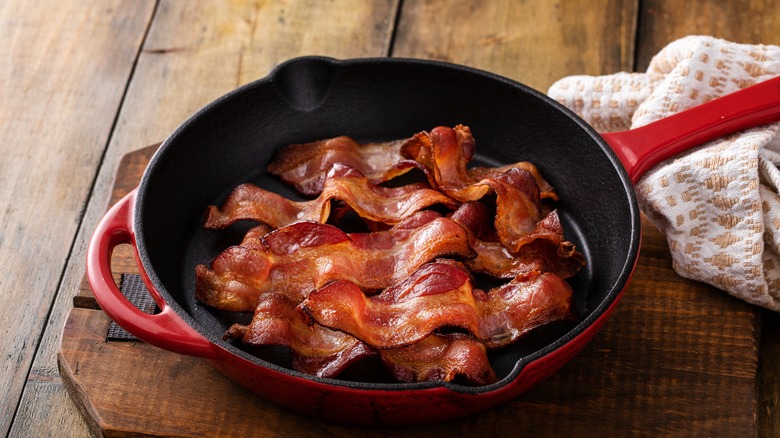Why You Should Think Twice Before Microwaving Lunch Meat
Although microwaves are present in nearly every American home and prove themselves useful in countless situations, microwaves aren't always the right appliance for the job. For example, just as you shouldn't be microwaving grapes — and why would you want to? — or aluminum foil, you also shouldn't be microwaving lunch meat.
As part of the preservation process, lunch meats are treated with various chemicals. One such chemical, sodium nitrite, protects the meat's color and flavor while also preventing bacterial growth and spoilage. However, when sodium nitrite is heated in the microwave, it can create nitrosamine compounds known to increase the risk of certain cancers (per Healthline).
Certain lunch meats also contain high levels of saturated fats, which are troubling enough on their own. Once you add a microwave's radiation to the mix, these saturated fats transform into cholesterol oxidation products (COPs), according to a 2015 study for Lipids in Health and Disease Journal. These COPs cause a spike in cholesterol and oxidation that antioxidants won't affect (per a 2003 study for the Journal of Biological Research), Alzheimer's disease, macular degeneration, diabetes, and chronic colitis (via a 2023 study for the Journal of Agricultural and Food Chemistry). Seriously — don't reheat your lunch meat in the microwave.
Cholesterol oxidation products aren't just a lunch meat problem
As you can imagine, the dangers of cholesterol oxidation products (COPs) are tied to far more food items than just lunch meat. Any processed meats –- bacon, corned beef, hot dogs, sausages, jerky, etc. -– have the potential to create oxidized cholesterol when microwaved. Of course, the more saturated fats a processed meat contains, the higher the risk.
Interestingly, COPs can arise from the microwaving of raw fish and chicken, as well as from powdered egg whites. Red meats contain more saturated fats and cholesterol from the get-go, but white meats like fish and chicken build up more COPs as they're typically cooked over longer periods of time.
Though you can't entirely avoid COPs if you're eating processed meats on a regular basis, you can limit exposure by choosing leaner meats. Less cholesterol and fewer saturated fats can help reduce the COPs produced during the cooking process. You may also choose to cut back on how much processed meat you consume.
So how do we go about cooking and reheating processed meats?
Fortunately, there are a few relatively safer ways to cook or reheat lunch meat and other processed meats. In that 2015 study published by Lipids in Health and Disease Journal, researchers measured cholesterol oxidation products in meats that had been pan-roasted, oven-grilled, and microwaved. Microwaved sausages produced the largest amount of COPs, followed by sausages and lunch meats that had been oven-grilled. After refrigerating the meats for several days and reheating them, researchers found oven-grilled and microwave-reheated bacon to have extremely high levels of COPs, followed by pressed ham and sausages under the same conditions.
All in all, meat is best consumed fresh and pan-roasted (both for cooking and reheating). Processed meats that have been oven-grilled or microwaved are more susceptible to forming COPs — though any meats' COPs will increase the longer they're refrigerated after cooking. When it comes to processed meat –- especially lunch meat -– just play it safe and avoid the microwave.



